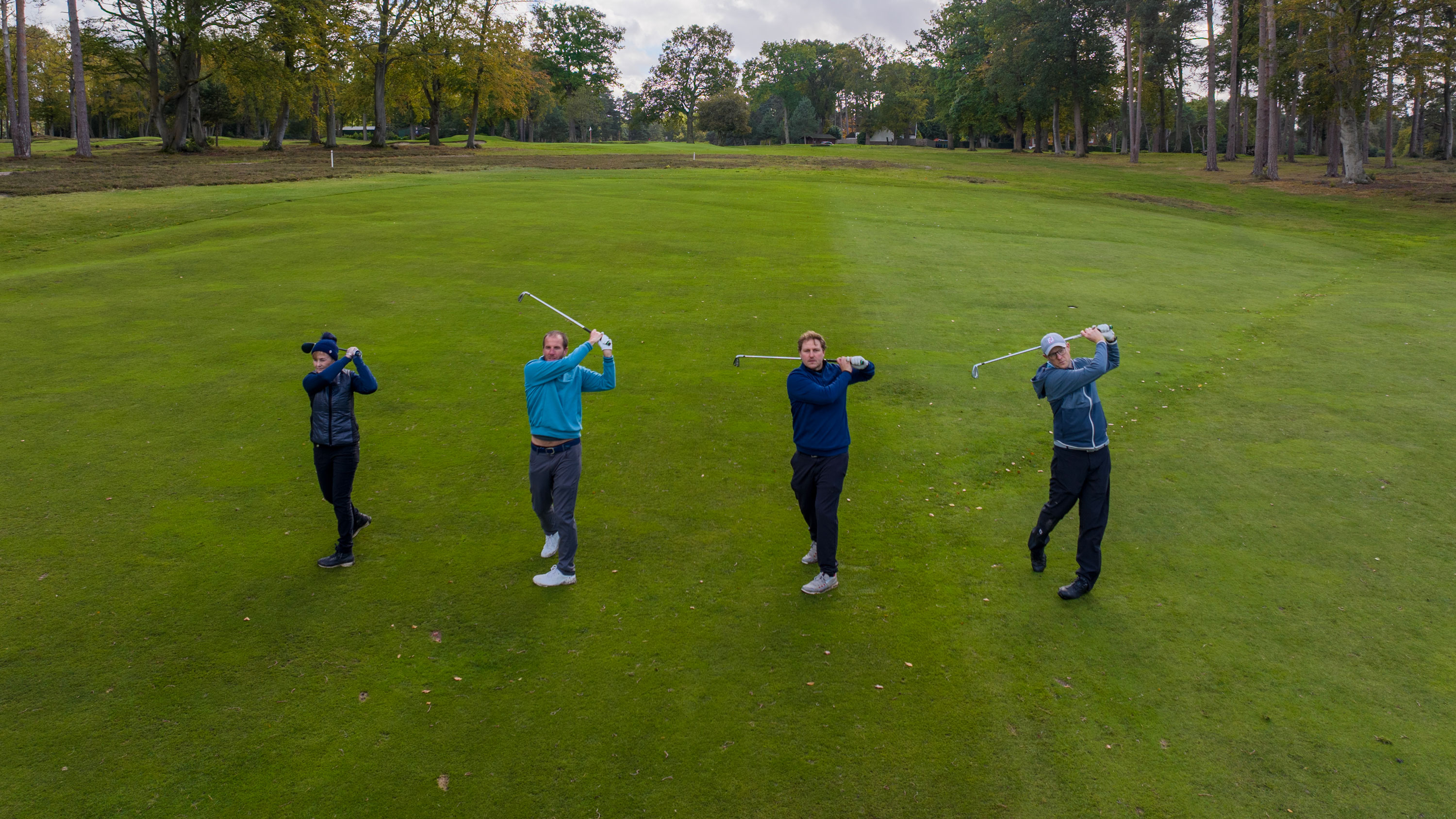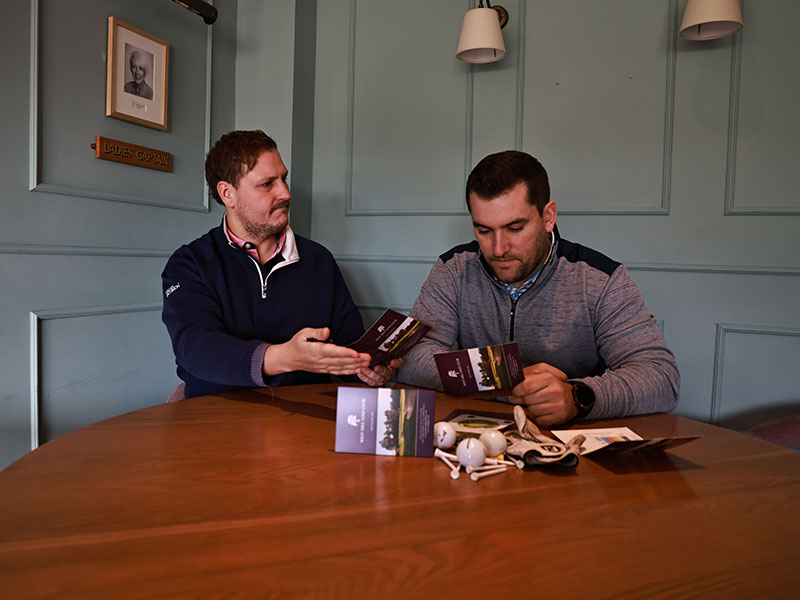‘Surely Any Right-Minded Person Would Conclude The Majority Of Handicaps Are Bloated’
We’re into a new club golf season, but issues from previous years still remain – notably the imbalance between low- and mid/high-handicappers when it comes to winning Stableford competitions


At a recent GM testing day – where the best golf clubs and designer clothing were put through their paces – a Stableford competition also took place.
Afterwards, a number of players strolled into the clubhouse with scores in the high 30s, including a couple with mid-single-digit handicaps. It wasn’t the hardest golf course in the world and the conditions were favourable.
However, they were all trumped by a 47-point outing from GM production editor David Taylor. Playing off 18, he’d shot 80 – the best round of his life.
The low-handicappers weren’t even surprised – generally someone is in the mid-40s when they’re in the high-30s, they said. The trouble is, it’s hard for a golfer with a very low handicap to do better than high-30s in a Stableford competition.
A friend also recently texted me to say a mid-handicapper at his club recorded 46 points to win a competition. He had back-to-back eagles on the front nine. Gross eagles.
This isn’t a new issue and many of the more competent golfers out there point their fingers at the World Handicap System. Some feel the WHS has ruined golf for low-handicappers, while others believe it’s the only sport that rewards mediocrity.
It’s only May, but the above scenario will no doubt have been common over the first few competitions of the season. There are plenty of explanations for it, however, including (but not limited to) the below.
Subscribe to the Golf Monthly newsletter to stay up to date with all the latest tour news, equipment news, reviews, head-to-heads and buyer’s guides from our team of experienced experts.
Anyone in the handicap range from 10-36 is capable of having the round of their life and shooting somewhere between seven and ten shots lower (or more in extreme cases) than their course handicap. However, someone with a handicap of 3 would need to shoot under-par to get to 40 points.
Golf is also a difficult game. As a result, there are naturally going to be more players with double-digit handicaps. By extension, players from these groups are more likely to win competitions.
But there’s no question the system isn’t perfect, and you could make a strong case that players with indexes below 6 or 7 are right to be annoyed by what they deem to be a disproportionately unfair framework.

Competition winners almost always have a Stableford score in the 40s
Same old?
This issue also presents itself in team competitions, too, like four-ball better-ball. Many golf clubs run pairs competitions as part of their annual calendars. One Golf Monthly reader was left dismayed after the first 4BBB of the season.
For Stuart Mather, who has a handicap index of 6.6, it was very much a case of ‘same old’ as his club staged the first four-ball better-ball competition of the year.
“We’ve just had our first four-ball better-ball of the season at my club and 49 points took the winning prize. That’s 13-under-par. The golfers in the winning team had handicaps of 20 and 17,” he said.
“I had a look back on the HowDidiDo scoring platform and found out that a pair of single-figure golfers have only won one 4BBB competition in two years. That means the chances of winning as a single-figure-handicapper are less than five per cent.”
There are plenty out there who believe low-single-figure players shouldn’t complain – after all, they can enter scratch competitions and shoot scores that most golfers can only dream of. Not winning a sleeve of balls or a bar tab feels like a small price to pay.
The other side of the coin is that it’s not a level playing field – something the World Handicap System (and previous systems for that matter) strive to create.
“And now the competition fee has risen from £3 to £4. Common sense from a financial point of view would surely suggest not to enter four-ball better-ball competitions as the chance of winning for players in my handicap range is so low,” adds Stuart.

There are pros and cons to the WHS
Competitive and active club members withdrawing from competitions as they feel the odds are unfairly stacked against them is clearly not a desirable scenario. Many clubs do offer categorised events and prizes, but should that be necessary?
“In support of my club, the single events are categorised. However, the question I wrestle with is why that should have to be the case. Perhaps the outcomes of the singles competitions would spew out the same statistics as above.
“Surely any right-minded person would conclude that the majority of handicaps are bloated. There is also a larger number of double-figure handicappers, so there’s more chance of one of them having the round of their life.”
The above two scenarios are not isolated cases – far from it. Mid- to high-handicappers winning either individual or pairs Stableford competitions – often with huge scores – is extremely common.
Objectively, it’s clearly something that needs to be looked at in more detail.
Have you seen any huge Stableford scores winning individual or pairs competitions this year? Do you have data on the number of competitions won by single-figure handicappers at your club? If so, leave a comment below!
Quiz: 15 questions all die-hard golfers should know the answer to

Nick Bonfield joined Golf Monthly in 2012 after graduating from Exeter University and earning an NCTJ-accredited journalism diploma from News Associates in Wimbledon. He is responsible for managing production of the magazine, sub-editing, writing, commissioning and coordinating all features across print and online. Most of his online work is opinion-based and typically centres around the Majors and significant events in the global golfing calendar. Nick has been an avid golf fan since the age of ten and became obsessed with the professional game after watching Mike Weir and Shaun Micheel win The Masters and PGA Championship respectively in 2003. In his time with Golf Monthly, he's interviewed the likes of Rory McIlroy, Justin Rose, Jose Maria Olazabal, Henrik Stenson, Padraig Harrington, Lee Westwood and Billy Horschel and has ghost-written columns for Westwood, Wayne Riley, Matthew Southgate, Chris Wood and Eddie Pepperell. Nick is a 12-handicap golfer and his favourite courses include Old Head, Sunningdale New, Penha Longha, Valderrama and Bearwood Lakes. If you have a feature pitch for Nick, please email nick.bonfield@futurenet.com with 'Pitch' in the subject line. Nick is currently playing: Driver: TaylorMade M1 Fairway wood: TaylorMade RBZ Stage 2 Hybrid: Ping Crossover Irons (4-9): Nike Vapor Speed Wedges: Cleveland CBX Full Face, 56˚, Titleist Vokey SM4, 60˚ Putter: testing in progress! Ball: TaylorMade TP5x
You must confirm your public display name before commenting
Please logout and then login again, you will then be prompted to enter your display name.